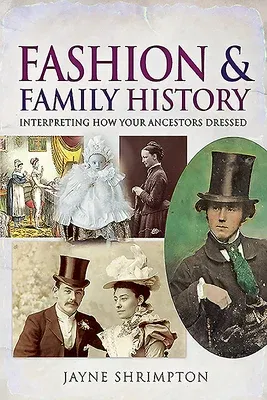Jayne Shrimpton
(Author)Fashion and Family History: Interpreting How Your Ancestors DressedPaperback, 28 December 2020

Qty
1
Turbo
Ships in 2 - 3 days
In Stock
Free Delivery
Cash on Delivery
15 Days
Free Returns
Secure Checkout

Part of Series
Tracing Your Ancestors
Print Length
200 pages
Language
English
Publisher
Pen and Sword Family History
Date Published
28 Dec 2020
ISBN-10
1526760266
ISBN-13
9781526760265
Description
Product Details
Author:
Book Format:
Paperback
Country of Origin:
GB
Date Published:
28 December 2020
Dimensions:
23.88 x
15.49 x
2.03 cm
ISBN-10:
1526760266
ISBN-13:
9781526760265
Language:
English
Pages:
200
Publisher:
Series:
Weight:
498.95 gm